Hanokinn (한옥人(한옥인))
687.3M 2025-07-23
19, Poseok-ro 1050beon-gil, Gyeongju-si, Gyeongsangbuk-do
Cheonnyeonae (Gyeongjuppang, chalborippang, chalboritteok) (천년애 경주빵 찰보리빵 찰보리떡)
702.4M 2025-03-19
Cheomseong-ro 67, Gyeongju-si, Gyeongsangbuk-do
Solar del Palacio Wolseong de Gyeongju (경주 월성(반월성))
733.0M 2023-01-16
Inwang-dong, Gyeongju-si, Gyeongsangbuk-do.
Este fue el lugar de la fortaleza del palacio durante la dinastía Silla (57 a.C. - 935). El nombre de la fortaleza significa literalmente 'luna creciente encima del monte'.
Los famosos libros de Samgukyusa dicen que el cuarto rey de Silla, Seoktalhae (57 a 80) pensaba que esta área era ideal para la fortaleza y compró la tierra a un noble. El segundo rey Namhae (4 a 24), impresionado por la acción de Seoktalhae, lo acogió como hijo más tarde, convirtiéndolo en el cuarto rey. La zona estuvo entonces bajo mandato de Silla por 900 años, siendo el último rey, Gyeongsun (927 a 935). A pesar de la magnífica grandeza del palacio, ahora es solo un terreno baldío, y según dicen estaba llena de edificios imperiales de la dinastía Silla.
En la actualidad, la zona de Wolseong tiene un congelador hecho de rocas llamado Seokbinggo, un lugar para arquería, un campo de carreras de caballo y un parque infantil, que se asemeja a los terrenos del período Joseon (la dinastía que gobernó en la península coreana desde 1392 a 1910).
Kelimgung (계림궁)
863.1M 2025-07-18
932, Poseok-ro, Gyeongju-si, Gyeongsangbuk-do
Kelimgung is a comfortable hanok pension near the Oreung tombs in, Gyeongju, Gyeongsangbuk-do; the name derives from Gyerim, the forest birthplace of Kim Alji who helped found the ancient Silla kingdom. The main building has four rooms and a shared kitchen, and there are two guest rooms in the yard, where barbecues can be held; reservations are required. Residents can experience traditional activities such as Gamasot cooking and Neolttwigi, and enjoy strolling in the nearby Oreung. Other nearby attractions include Banwolseong, Cheomseongdae, and Daereungwon.
Biblioteca del Milenio de Silla en el Museo Nacional de Gyeongju (국립경주박물관 신라천년서고)
892.2M 2025-04-29
Inwang-dong 76, Gyeongju-si, Gyeongsangbuk-do
Museo Nacional de Gyeongju (국립경주박물관)
976.7M 2025-03-21
Iljeong-ro 186, Gyeongju-si, Gyeongsangbuk-do.
El Museo Nacional de Gyeongju se caracteriza por su profunda tradición, con una historia de aproximadamente 90 años. Representando a Gyeongju, ciudad que había sido la capital del reino de Silla (57 a.C. - 935 d.C.), es en este museo donde podrá ver la historia cultural de Gyeongju.
El área de exhibición está dividida en cuatro grandes secciones: la Sala Principal, los Anexos I y II, y al aire libre, se halla el Área Descubierta de Exhibición (Predio del Museo). En la Sala Principal, podrá observar cerámicas de barro, y las salas de Artes y Artesanías podrá ver numerosas obras artísticas y trabajos artesanales. La Sala Memorial Gugeun tiene en exhibición 666 reliquias que fueron donadas por Lee Yang-Seon de su colección personal para su preservación. Los restos de reliquias excavadas de las grandes tumbas que se hallaban en la ciudad de Gyeongju se encuentran exhibidas en el Anexo I, o la Galería Gobun. Entre ellos, hay adornos magníficos tales como coronas de oro, coronas ornamentales, cintos y aretes, entre otros. A través de estos artículos podrá vivir la experiencia del sobresaliente nivel artístico del período de Silla. Aproximadamente 30.000 artículos fueron excavados del estanque Wolji, entre los cuales los más significativos se hallan expuestos al público en el Anexo II, o la Galería Wolji. Las demás galerías tienen en exhibición los utensilios del hogar. La gran variedad de clases de ítems ilustra la vida de la corte real durante el período de Silla.
Después de recorrer las galerías, podrá trasladarse al Área Descubierta de Exhibiciones, que la componen los Jardines del Museo. La Campana del Rey Seongdeok colocada aquí es la campana de mayor renombre de los templos budistas. También hay varios artículos de los palacios de la realeza y templos que se hallan exhibidos aquí. Las esculturas budistas decoran la mayoría de los objetos de piedra. Si usted es un viajero interesado en el budismo o la magnificencia de la cultura de los palacios reales, este es un sitio que no deseará perderse.
Áreas Históricas de Gyeongju (경주역사유적지구) [Patrimonio Cultural de la Humanidad de la Unesco]
981.6M 2025-03-17
Taejong-ro 757, Gyeongju-si, Gyeongsangbuk-do.
Designado como Patrimonio Cultural de la Humanidad por la Unesco en noviembre del 2000, es una zona histórica que conserva toda la historia y cultura de Gyeongju, la antigua capital de Silla (57-935). Se clasifican en un total de 5 áreas históricas. La primera es la zona de Namsan, la cuna del arte budista de Silla. Considerado un museo al aire libre sin paredes, es un lugar en donde persiste el espíritu de Silla, y reúne 37 reliquias budistas; el pabellón Poseokjeong (Sitio Histórico), la roca Tapgok Maaejosanggun (Tesoro – figuras budistas grabadas en roca), la pagoda de tres pisos de piedra del templo Cheonryongsa (Tesoro), la roca Chilburam Maaeseokbul (Tesoro - figuras budistas grabadas en roca), la roca Bulgok Seokbuljwasang (Tesoro), etc. La segunda es la zona de Wolseong, sitio en donde estaban los palacios de la dinastía milenaria de Silla. Se encuentran en esta área el bosque Gyerim (Sitio Histórico), el sitio de la sala Imhaejeon, y el mejor observatorio de Asia, Cheomseongdae (Tesoro Nacional). La tercera es la zona de Daereungwon, el complejo de tumbas reales, los pertenecientes a los reyes, reinas y miembros de la nobleza. Durante su proceso de excavación se han encontrado coronas, pinturas de caballos míticos, variedad de cerámica, etc., entre otras reliquias que han servido como base de estudio histórico. La cuarta es la zona en donde se encontraba instalado el famoso templo Hwangnyongsa (Sitio Histórico). Y por último, la quinta zona, es el lugar en donde se establecía la fortaleza Myeonghwalsanseong (Sitio Histórico), que se presume que fue construido hace 400 años. Estas áreas históricas de Gyeongju, designadas como Patrimonio Cultural de la Humanidad por la Unesco, comprenden un total de 52 patrimonios culturales.
Calle Hwangnidan-gil de Gyeongju (경주 황리단길)
986.9M 2025-03-19
Poseok-ro 1080, Gyeongju-si, Gyeongsangbuk-do
Gyeongju Oreung Hanok (경주오릉한옥)
995.9M 2025-07-18
12-17, Gukdang 2-gil, Gyeongju-si, Gyeongsangbuk-do
Oreung Hanok in Gyeongju, is a guesthouse just across Namcheon Stream from Gyeongju’s Five Royal Tombs (‘oreung’ in Korean). The guesthouse’s location gives it a panoramic view not only of the tomb complex but over much of the 1,000 year old city of Gyeongju. The cozy rooms have double doors to block drafts and noise, and clean white bedding; while the spacious yard outside is a good spot for taking photos. The bustling Hwangnidan Street is a 15-minute walk away, while must-see sites Cheomseongdae, the Daereungwon tomb complex, Donggung Palace and Wolji Pond are 10 minutes away by car.
Campana Divina del Rey Seongdeok (성덕대왕신종)
1.0Km 2021-02-17
Iljeong-ro 186, Gyeongju-si, Gyeongsangbuk-do
+82-54-740-7500
La campana del rey Seongdeok, la más grande de toda Corea actualmente, mide 3,75 metros de alto, y un diámetro de 2,27 metros, y 11-25 centímetros de grosor. En 1997, el Museo Nacional de Gyeongju comprobaron que pesaba 18,9 toneladas. La campana fue hecha para rendir homenaje en memoria del rey Seongdeok. Se terminó en el año 771 y le dieron el nombre de "La Campana Divina del rey Seongdeok". Sin embargo, debido a que la campana se colocó en el templo Bongdeoksa, también se la conocía como la campana de Bongdeoksa. Su otro nombre por la cual es conocida es la Campana Emile, que proviene de una leyenda antigua en la que un niño fue sacrificado para dar sonido a la campana, de los que sus ecos "em-eeh-leh", se parecen a la palabra coreana tradicional para "mamá".
El sonido tubular del tubo en la parte superior de la campana que ayuda a que el sonido resuene es una característica única que se puede encontrar sólo en las campanas de Corea. El yongnyu, que servía como bucle para colgar la campana, fue decorado para parecerse a la cabeza de un dragón. Se puede encontrar una banda de arabescos en el hombro, y en el punto de la campana se aprecia la forma de una flor de loto. El magnífico diseño y los métodos de inscripción usados en la campana ejemplifican el gran arte de los artistas de la época de Silla unificada. La campana también tiene inscritos más de mil caracteres chinos, y su belleza y integridad han sido preservados cuidadosamente a pesar del paso de más de 1.300 años.
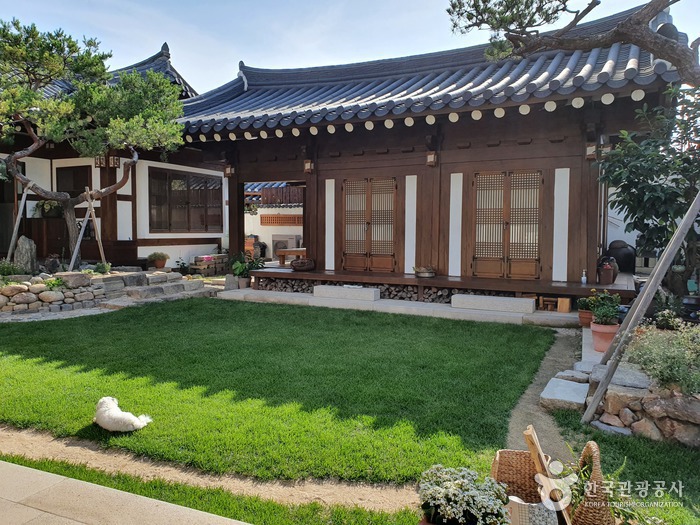

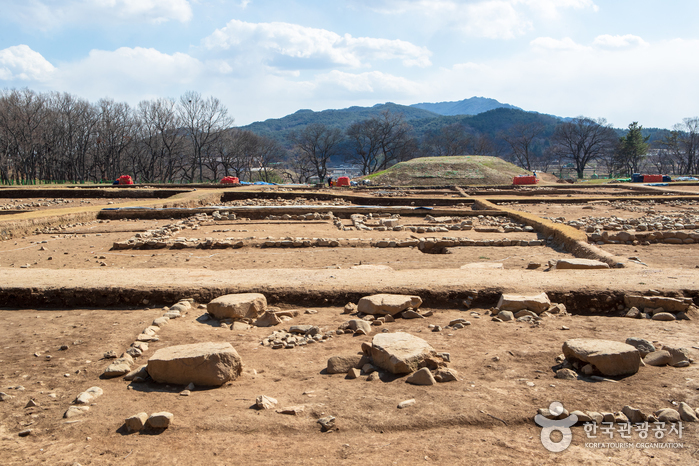
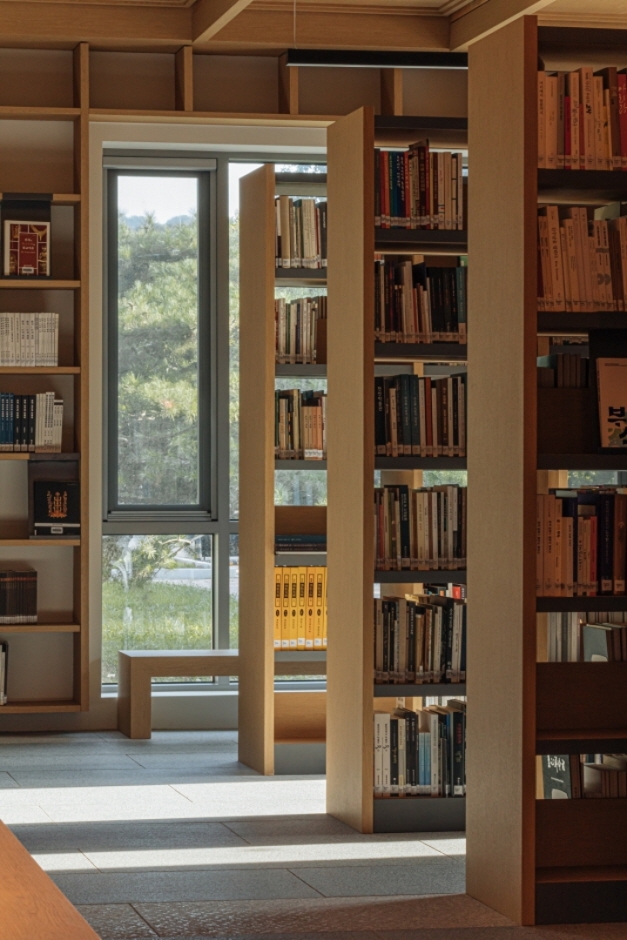
![Áreas Históricas de Gyeongju (경주역사유적지구) [Patrimonio Cultural de la Humanidad de la Unesco]](http://tong.visitkorea.or.kr/cms/resource/03/2656603_image2_1.jpg)
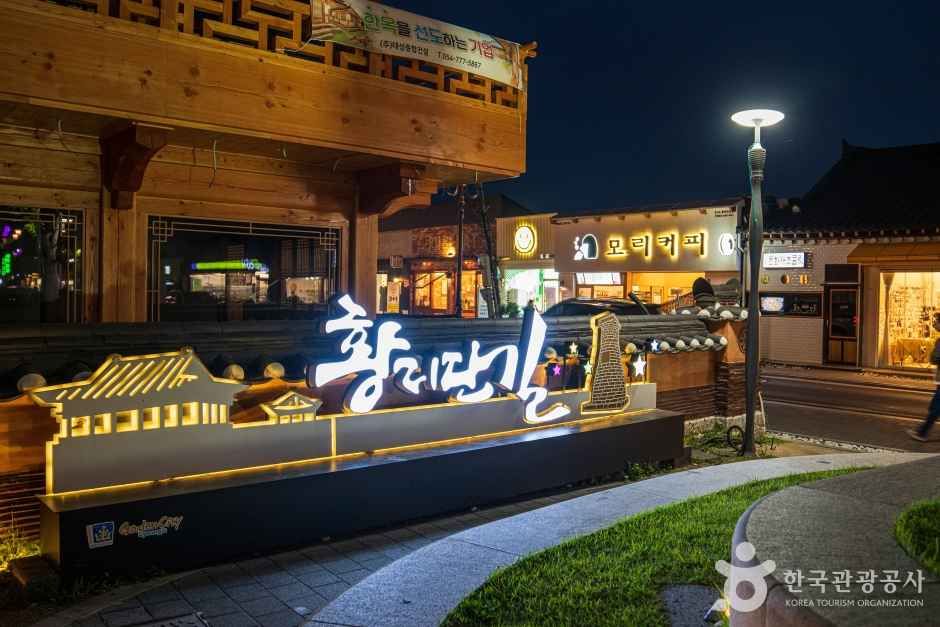
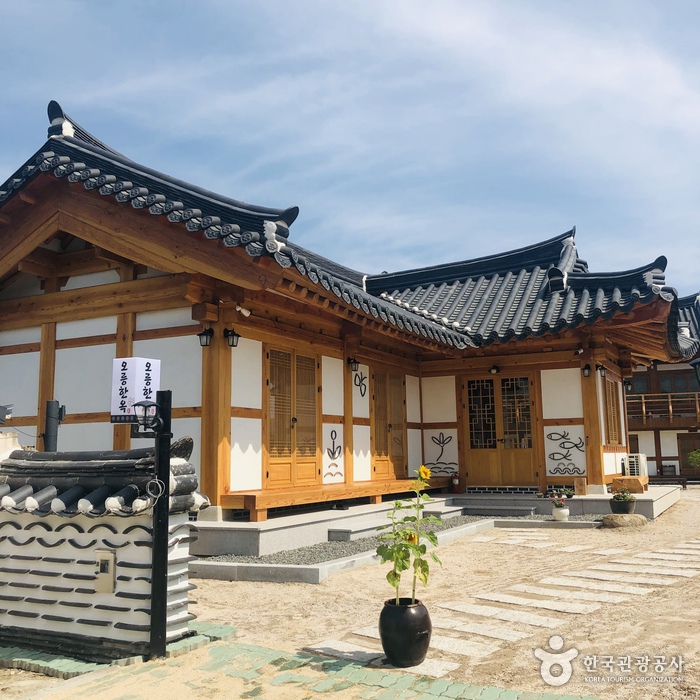
 Español
Español
 한국어
한국어 English
English 日本語
日本語 中文(简体)
中文(简体) Deutsch
Deutsch Français
Français Русский
Русский